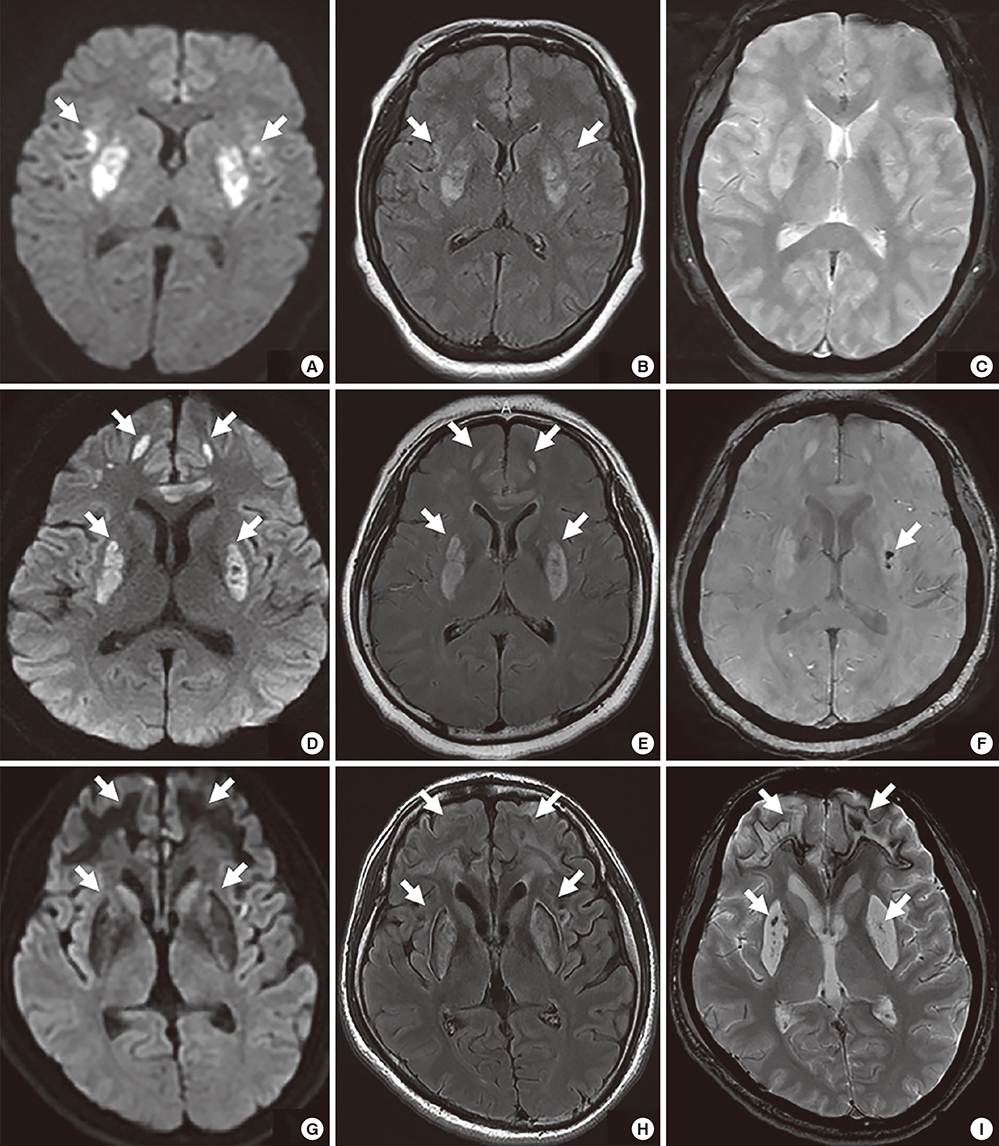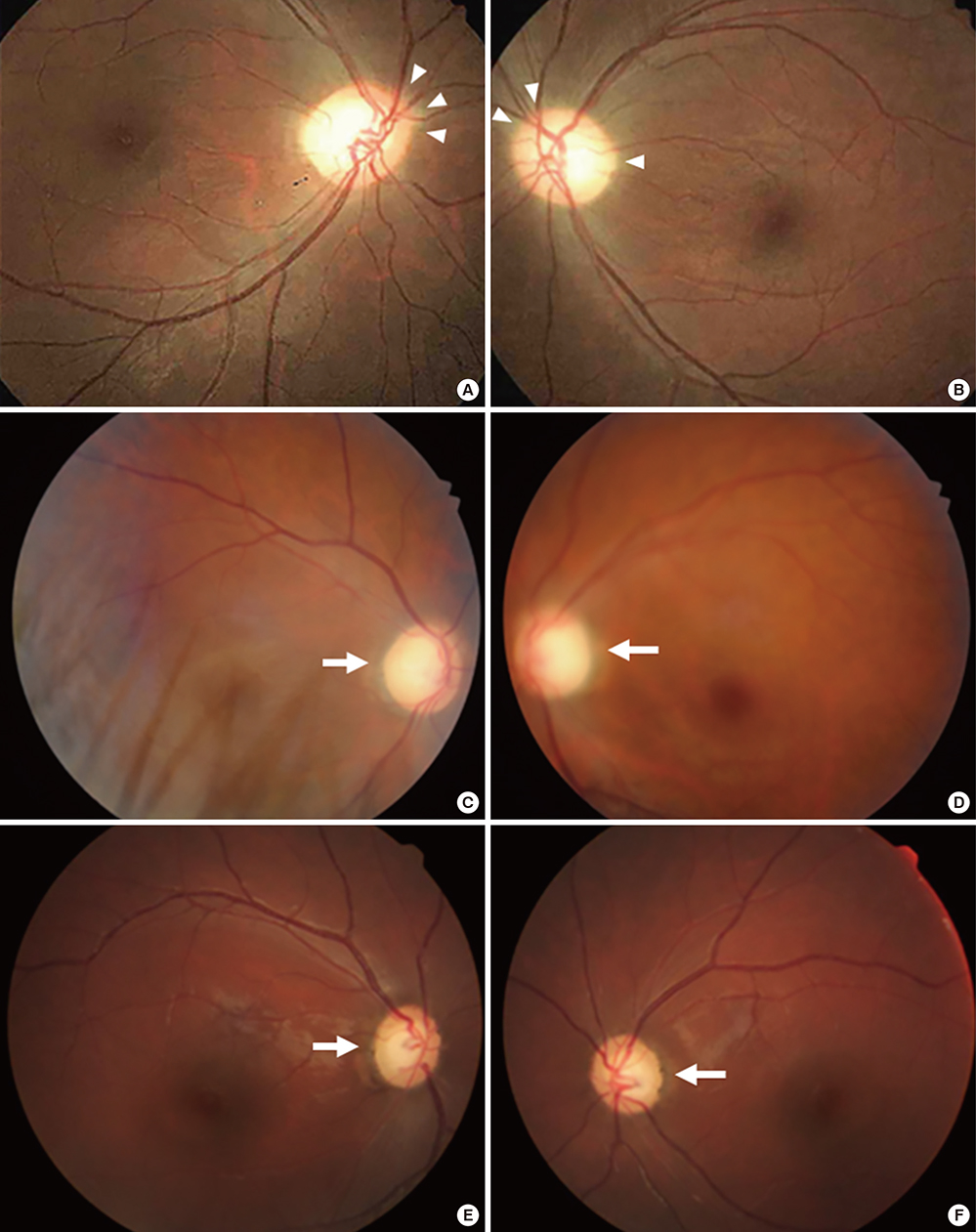J Korean Med Sci.
2017 Feb;32(2):371-376. 10.3346/jkms.2017.32.2.371.
Neurological Complications Resulting from Non-Oral Occupational Methanol Poisoning
- Affiliations
-
- 1Department of Neurology, Ewha Womans University School of Medicine, Ewha Womans University Mokdong Hospital, Seoul, Korea. dream-yoon@hanmail.net
- 2Department of Neurology, Soonchunhyang University School of Medicine, Soonchunhyang University Bucheon Hospital, Bucheon, Korea.
- 3Department of Neurology, Ajou University School of Medicine, Ajou University Hospital, Suwon, Korea.
- 4Department of Occupational and Environmental Medicine, Ewha Womans University School of Medicine, Ewha Womans University Mokdong Hospital, Seoul, Korea.
- KMID: 2364185
- DOI: http://doi.org/10.3346/jkms.2017.32.2.371
Abstract
- Methanol poisoning results in neurological complications including visual disturbances, bilateral putaminal hemorrhagic necrosis, parkinsonism, cerebral edema, coma, or seizures. Almost all reported cases of methanol poisoning are caused by oral ingestion of methanol. However, recently there was an outbreak of methanol poisoning via non-oral exposure that resulted in severe neurological complications to a few workers at industrial sites in Korea. We present 3 patients who had severe neurological complications resulting from non-oral occupational methanol poisoning. Even though initial metabolic acidosis and mental changes were improved with hemodialysis, all of the 3 patients presented optic atrophy and ataxia or parkinsonism as neurological complications resulting from methanol poisoning. In order to manage it adequately, as well as to prevent it, physicians should recognize that methanol poisoning by non-oral exposure can cause neurologic complications.
MeSH Terms
Figure
Reference
-
1. Hayreh MS, Hayreh SS, Baumbach GL, Cancilla P, Martin-Amat G, Tephly TR, McMartin KE, Makar AB. Methyl alcohol poisoning III. Ocular toxicity. Arch Ophthalmol. 1977; 95:1851–1858.2. Glazer M, Dross P. Necrosis of the putamen caused by methanol intoxication: MR findings. AJR Am J Roentgenol. 1993; 160:1105–1106.3. Mozaz MJ, Wyke MA, Indakoetxea B. Parkinsonism and defects of praxis following methanol poisoning. J Neurol Neurosurg Psychiatry. 1991; 54:843–844.4. Kruse JA. Methanol poisoning. Intensive Care Med. 1992; 18:391–397.5. Morgan MS. The biological exposure indices: a key component in protecting workers from toxic chemicals. Environ Health Perspect. 1997; 105:Suppl 1. 105–115.6. Han KH, Lee JH, Ha MS, Hwang JI, Min JH, Park JS, Kim H, Lee SW, Do HS. A case of methanol intoxication from windshield washer fluid ingestion misidentified as an alcoholic beverage. J Korean Soc Emerg Med. 2012; 23:762–768.7. Lim HS. Menthanol for hospital disinfectant should be eradicated. Occup Health (Lond). 2014; 319:34–36.8. Pelletier J, Habib MH, Khalil R, Salamon G, Bartoli D, Jean P. Putaminal necrosis after methanol intoxication. J Neurol Neurosurg Psychiatry. 1992; 55:234–235.9. Ryu J, Lim KH, Ryu DR, Lee HW, Yun JY, Kim SW, Kim JH, Jung-Choi K, Kim H. Two cases of methyl alcohol intoxication by sub-chronic inhalation and dermal exposure during aluminum CNC cutting in a small-sized subcontracted factory. Ann Occup Environ Med. 2016; 28:65.10. Kim SG. Hot issue-methanol intoxication: occupational health issue of methanol intoxication in small sized enterprises. Occup Health (Lond). 2016; 335:6–18.11. Lee BM. Be careful, methanol in vehicle washer fluid can cause blindness [Internet]. accessed on 17th July 2016. Available at http://news.mk.co.kr/newsRead.php?no=501325&year=2016.12. LoVecchio F, Sawyers B, Thole D, Beuler MC, Winchell J, Curry SC. Outcomes following abuse of methanol-containing carburetor cleaners. Hum Exp Toxicol. 2004; 23:473–475.13. Bebarta VS, Heard K, Dart RC. Inhalational abuse of methanol products: elevated methanol and formate levels without vision loss. Am J Emerg Med. 2006; 24:725–728.14. Givens M, Kalbfleisch K, Bryson S. Comparison of methanol exposure routes reported to Texas poison control centers. West J Emerg Med. 2008; 9:150–153.15. Lim CS, Demeter BL, Leikin JB. Fatality after inhalation of methanol-containing paint stripper. Clin Toxicol (Phila). 2015; 53:411.16. Hantson P, Haufroid V, Wallemacq P. Formate kinetics in methanol poisoning. Hum Exp Toxicol. 2005; 24:55–59.17. Black KA, Eells JT, Noker PE, Hawtrey CA, Tephly TR. Role of hepatic tetrahydrofolate in the species difference in methanol toxicity. Proc Natl Acad Sci USA. 1985; 82:3854–3858.18. Hovda KE, Mundal H, Urdal P, McMartin K, Jacobsen D. Extremely slow formate elimination in severe methanol poisoning: a fatal case report. Clin Toxicol (Phila). 2007; 45:516–521.
- Full Text Links
- Actions
-
Cited
- CITED
-
- Close
- Share
- Similar articles
-
- A Case of Optic Atrophy following Methanol Poisoning
- Screening of Workers with Presumed Occupational Methanol Poisoning: The Applicablility of a National Active Occupational Disease Surveillance System
- A Case of Methanol Poisoning Treated with Continuous Renal Replacement Therapy: The Serial Measurements of Serum Methanol Concentrations in Methanol Poisoning
- A retrospective analysis of toxic alcohol poisoning
- Acute Occupational Poisoning in Korea



